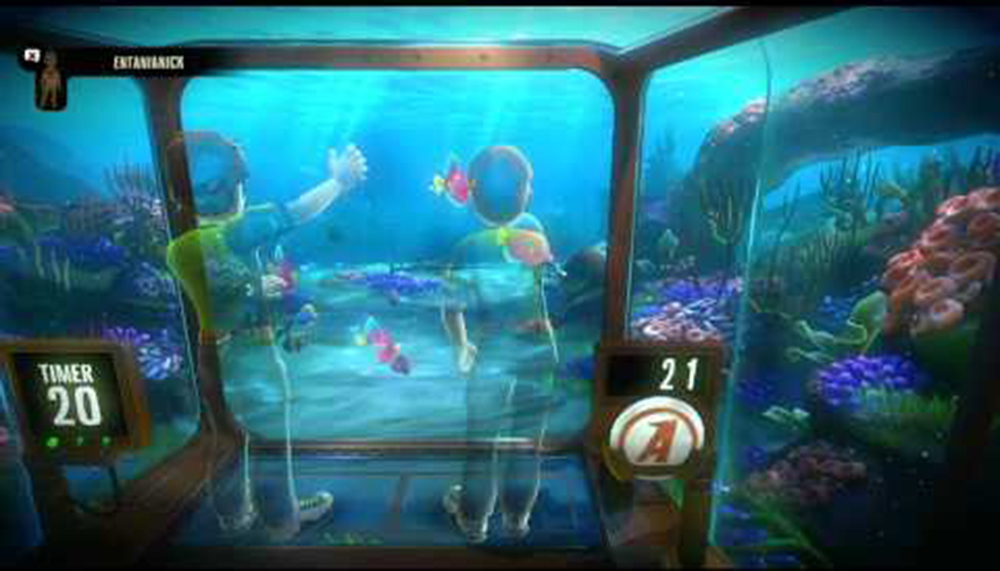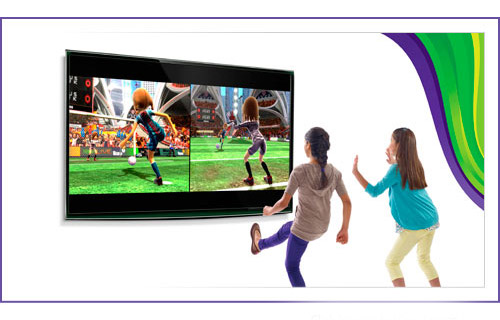Microsoft Kinect-based therapy improves coordination in children with movement disorders: an article review
Posted on 16th April 2014 by Jeff Scott

The integration of state of the art consumer technology and rehabilitation is one of my passions. I believe that technology has the power to greatly improve a patient’s overall experience while receiving therapy and can revolutionise how many different treatments are delivered. Once such tool that has been receiving a lot of attention is the use of the Microsoft Kinect for the rehabilitation of those with movement disorders. However, with all new interventions there needs to be research conducted in order to ensure that the intervention is safe and effective. The below article is a review of an article on the effectiveness of Kinect based coordinative training in children with degenerative ataxia.
Ilg W, Schatton C, Schicks J, Giese MA, Schöls L, Synofzik M. Video game-based coordinative training improves ataxia in children with degenerative ataxia. Neurology. 2012;79(20):2056-60.
What are the Microsoft Kinect and degenerative ataxia?

The Microsoft Kinect is widely available consumer technology that is commonly used for interactive gaming. The Kinect is a motion sensing input device that utilizes state of the art motion sensing cameras to provide full-body 3D motion capture, facial recognition, and voice recognition capabilities. This technology allows patients to interact with a Xbox game or computer program by moving their body in space in what is called a natural user interface. These systems were originally designed for gaming purposes, but are now being applied in many different medical settings including physical rehabilitation.
One field in which the Microsoft Kinect is currently being applied is providing coordinative training to to children with degenerative ataxia. Degenerative ataxias is a group of rare progressive neurological conditions that may lead to severe disability and premature death. Ataxia is a lack of voluntary coordination of muscle movements, and is caused by the degeneration of the cerebellar cortex and spinal pathways.
Why is this important?
Due to the progressive nature of degenerative ataxias these patients require intensive coordinative training in order to combat the loss of muscle coordination. Unfortunately, there is a reported lack of effective treatments for patients with degenerative ataxia. There is however, an increasing amount of evidence to support intensive coordinative training-based on physiotherapeutic exercises for improving degenerative ataxia in adults. Interventions are further complicated when working with children including low motivation due to the high-frequent physiotherapy. The use of the Microsoft Kinect could help increase motivation and compliance with coordination-based interventions by making therapy fun and interactive.
What did this study show?
The study by Ilg et al. included ten children with progressive spinocerebellar ataxia from the ataxia clinic at the Children’s Hospital in Tübingen, Germany, and who also met inclusion criteria. The subjects participated in a eight week coordinative training program that utilized three Microsoft Kinect video games that were found to be particularly suitable to address whole body coordination and dynamic balance. The games used were “Light Race”, “Table Tennis”, and “20000 Leaks”. Subjects received training in a laboratory-based setting during a two week training phase, which consisted of four one hour training sessions a week. The subjects were then instructed to train for 6 weeks in a home environment setting, and the subjects and their parents were asked to record intensity and performance of playing in a daily training protocol.
Outcome measures used included the Scale for the Assessment and Rating of Ataxia (SARA), the Dynamic Gait Index (DGI), the Activity-specific Balance Confidence (ABC), and game specific behaviour and scores were also assessed. Scores were recorded four times: six weeks before intervention, immediately before the first training, after the two week training period, and after the six week home training session.
The results of the study showed a significant reduction in ataxia symptoms as measure by SARA (-two points on average) when comparing pre/post intervention. The biggest change being improvement in the posture subscore. There was also a significant improvement in dynamic balance as reported on the DGI when comparing pre/post intervention. A tendency towards improvement on the ABC (7 out of 10 subjects) was reported, but these results failed to reach statistical significance. The subjects were also able to substantially improve their game-specific behaviour and scores.
Review of the article
Overall, I believe that the authors performed a very interesting study with strong impact on the effectiveness of video game based therapies on coordination in patients with degenerative ataxia. I liked that the authors used a wide and cohesive variety of outcome measures that looked at several different factors. They also did a great job at breaking down the statistical measurements used to analyze the data for all of the comparisons involved. As mentioned by the authors one issue of this study is the small sample size. A larger sample size would give the research more power and significance. Another limitation of the study is the inability to differentiate between the effects on the different types of ataxia. I suggest that future studies look at the effect of this training strategy on children with other types of coordination and motor disorders. Also, It would be beneficial to explore which Kinect games are the most effective at increasing coordination.
What is the take home message?
The take home message is that video-game-based therapy with the Microsoft Kinect can be a powerful tool in improving movement coordination in children with degenerative ataxia. The most exciting part of this study is that not only did the participants see statistically significant improvements in balance coordination, but the children reported that the training sessions were highly enjoyable and motivational in both the lab and home settings. This suggests that whole body controlled video games, like with the Microsoft Kinect, can be used to provide a highly motivational and enjoyable home based rehabilitation. There will need to be more research conducted in order to accurately determine the benefits and shortcomings of this type of therapy, and to understand outcomes for patients with other movement disorders. I look forward to reading more studies on the effectiveness of the Microsoft Kinect for therapeutic purposes.
References:
1. Ilg W, Schatton C, Schicks J, Giese MA, Schöls L, Synofzik M. Video game-based coordinative training improves ataxia in children with degenerative ataxia. Neurology. 2012;79(20):2056-60.
2. Microsoft. Xbox Kinect. Available at: http://www.xbox.com/en-US/kinect. Accessed April 15, 2014.
3. Klockgether T. The natural history of degenerative ataxia: a retrospective study in 466 patients. Brain. 1998;121(4):589-600.




No Comments on Microsoft Kinect-based therapy improves coordination in children with movement disorders: an article review
Hey guys. Sorry for the long delay. I didnt realize anyone had commented. As far as good games go, below is a list of some of the most effective games in my opinion.
1. Kinect Adventures
2. Kinect Sports 1 &2
3. Body and Brain Connection (integrates cognition and problem solving)
4. Your Shape Evolved Fitness 2012 (higher level exercise game)
5. Winter Stars (only game ive found thus far that you can use sitting on an exercise ball or wc).
I hope this helps!!
17th September 2014 at 10:32 pmJeff Scott
Hey Jeff! I am a new-grad pediatric PT working with a teenager with encephalopathy. I am trying to find additional Kinect games 1) that he can be successful with and 2) will increase static and dynamic balance. Have you come across any other games you have found beneficial?
15th August 2014 at 4:58 pmHi Sydnie, the games that were used in this study were “Light Race”, “Table Tennis”, and “20000 Leaks”. It would be wonderful if you shared with us games you have found useful too – they probably won’t be as evidence-based but it sure would be interesting!
3rd September 2014 at 11:49 am